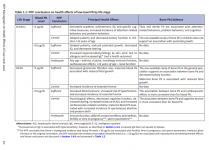JackHustonsMissingFace
Member
- Joined
- Jun 11, 2021
- Messages
- 7
I have a 1940s house with limited lead paint in the interior. Legally most of it isn't lead paint but some trim and walls have small amounts (had it tested by xrf) most under .1 or . 2 micrograms per cm3 (the legal cutoff is 1). I do also have some deteriorating legal lead paint on exterior. This means effectively that I can't just let her rip (legal definition does not equal safe just lawsuits) and sand to my hearts content but also that I don't have to disclose. So... Partial win?
I've had awful luck at contractors following rrp precautions who are lead certified and it seems they leave some amount of dust. I also have substantial flaking paint due to the previous homeowner not priming for latex over oil on most of the trim.
I'm looking to buy a festool hepa as dedicated hepa to clean up after chips and misc small home projects where lead paint is a risk and was looking at the smallest sys vacuum, mainly for portability and that since I'm not doing actual abatement I have low capacity needs. Would this work for me? Go bigger?
Also I'm worried that unlike my miele which I want to use for non lead it seems the bags don't self seal when opening the top. All thoughts appreciated
Sent from my Pixel 3a using Tapatalk
I've had awful luck at contractors following rrp precautions who are lead certified and it seems they leave some amount of dust. I also have substantial flaking paint due to the previous homeowner not priming for latex over oil on most of the trim.
I'm looking to buy a festool hepa as dedicated hepa to clean up after chips and misc small home projects where lead paint is a risk and was looking at the smallest sys vacuum, mainly for portability and that since I'm not doing actual abatement I have low capacity needs. Would this work for me? Go bigger?
Also I'm worried that unlike my miele which I want to use for non lead it seems the bags don't self seal when opening the top. All thoughts appreciated
Sent from my Pixel 3a using Tapatalk

